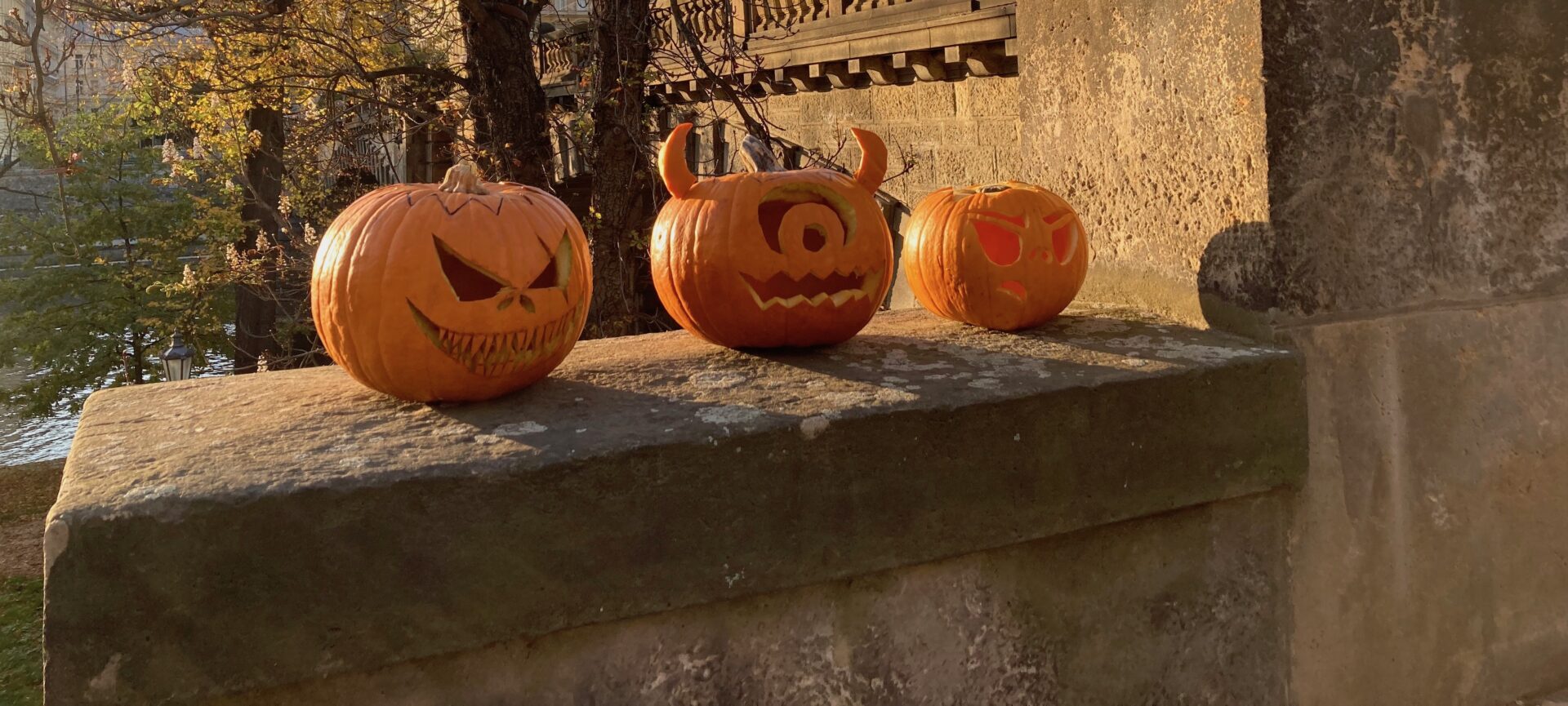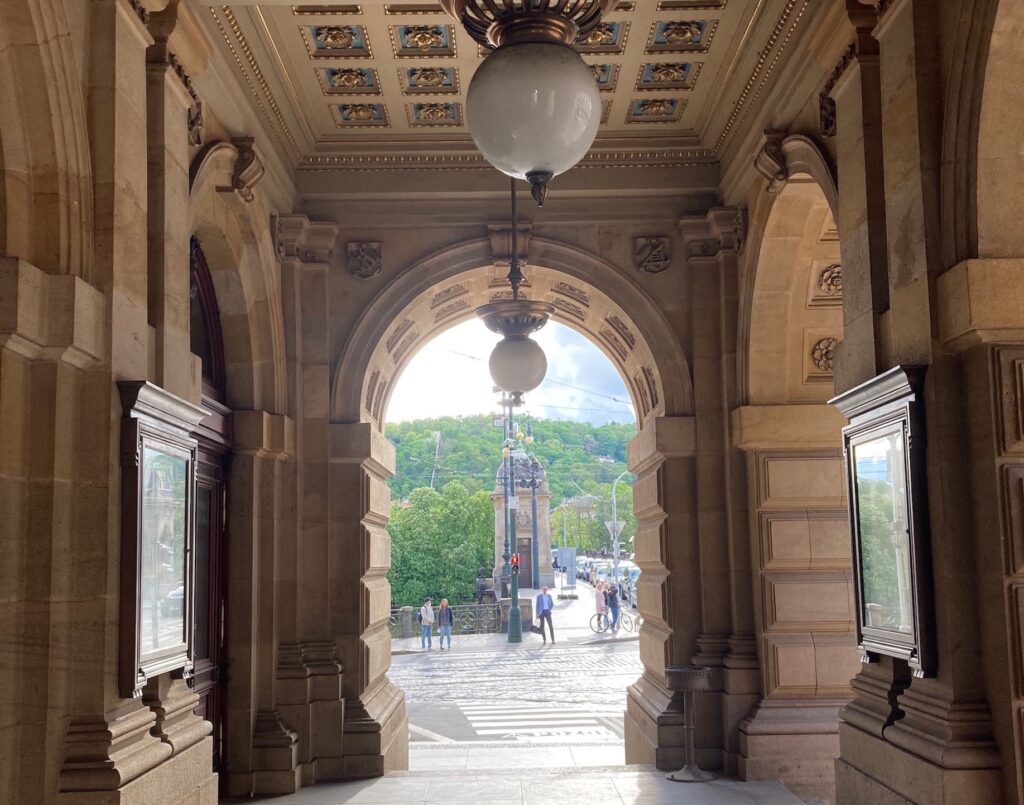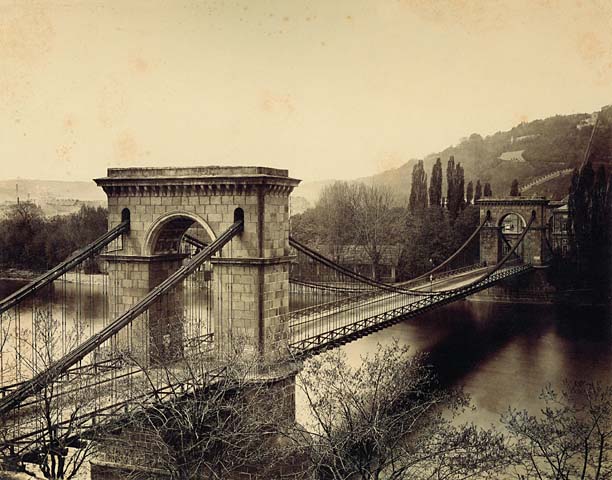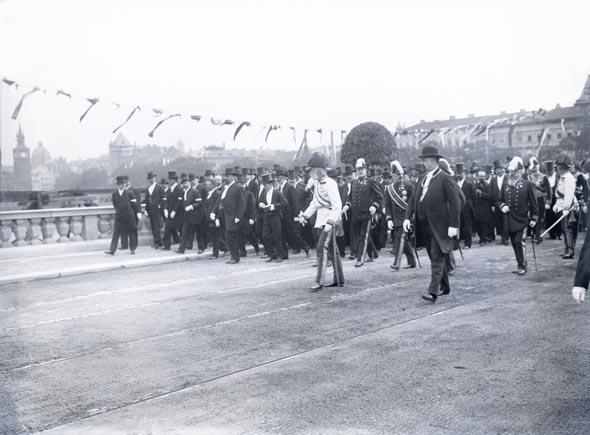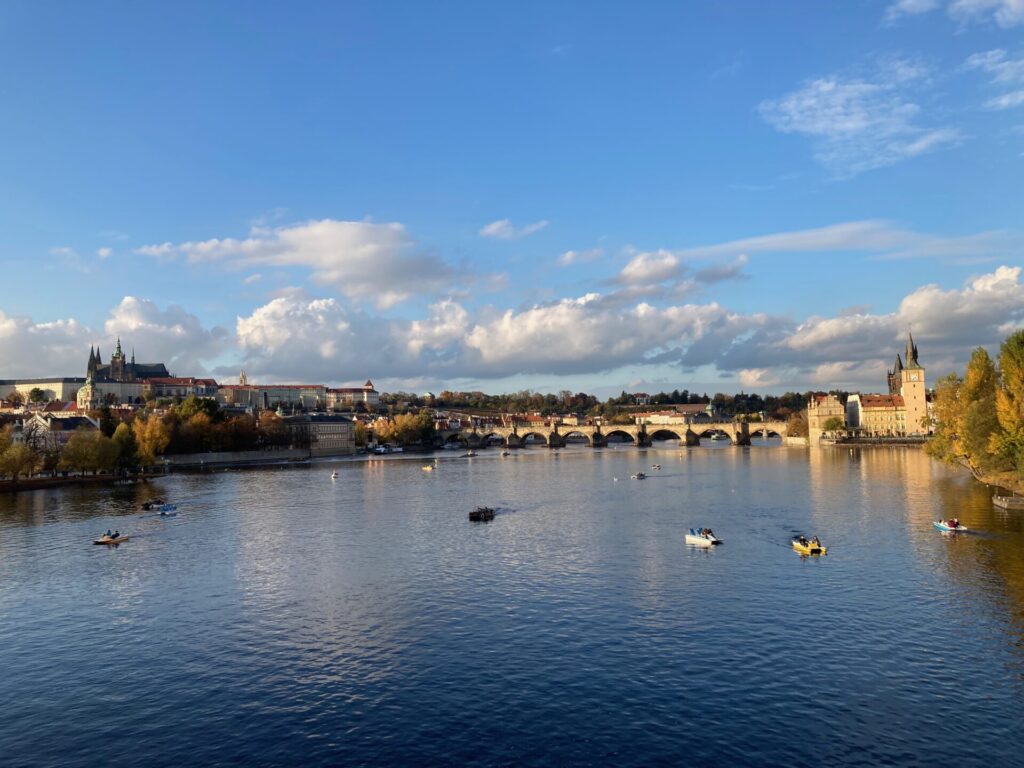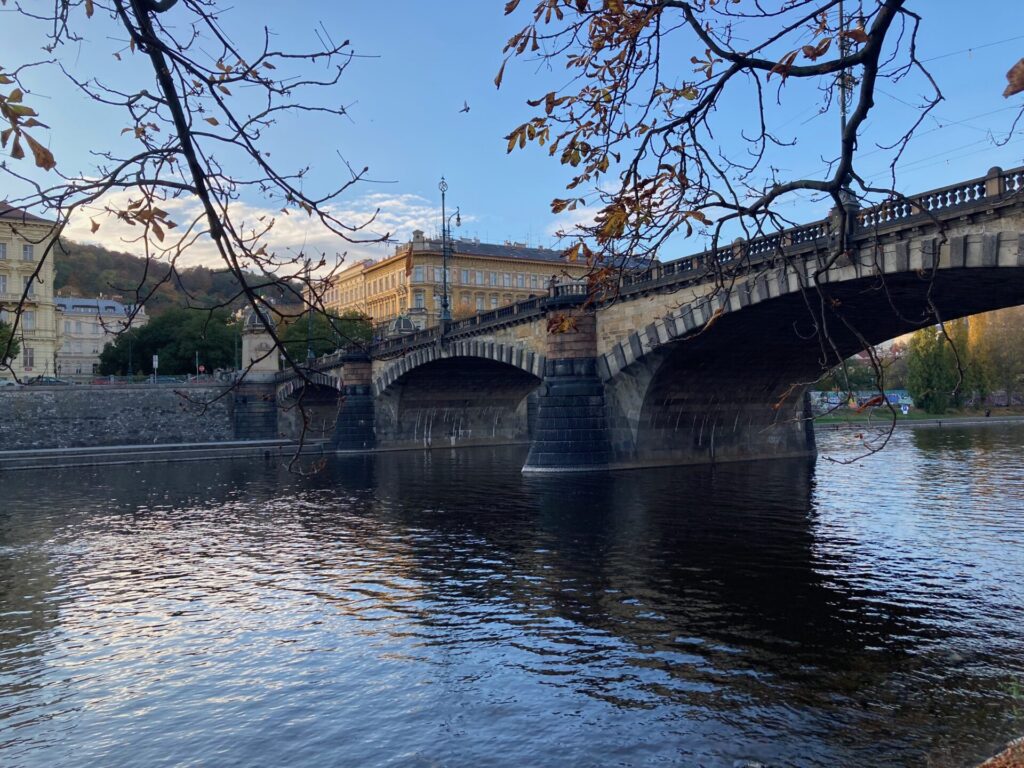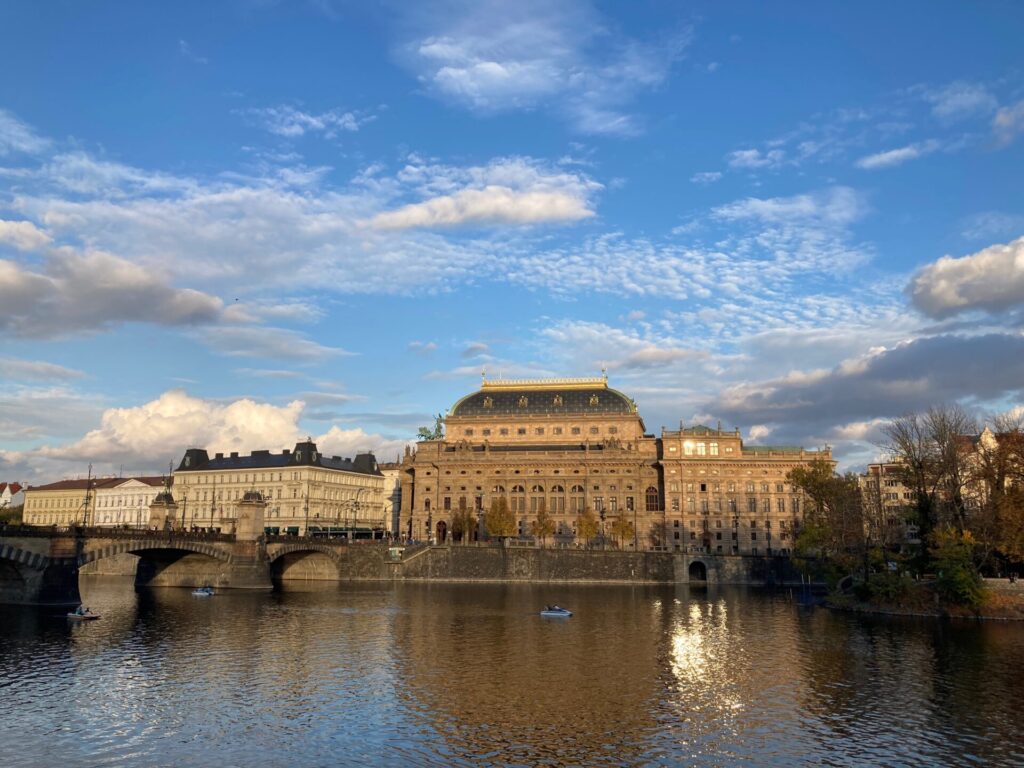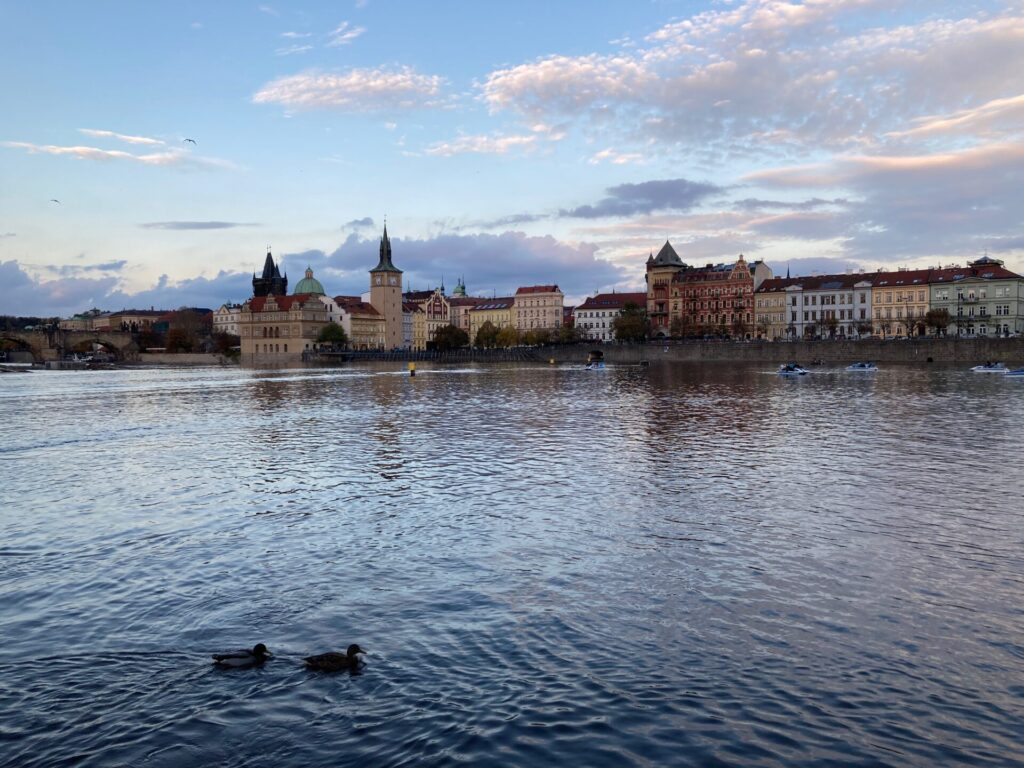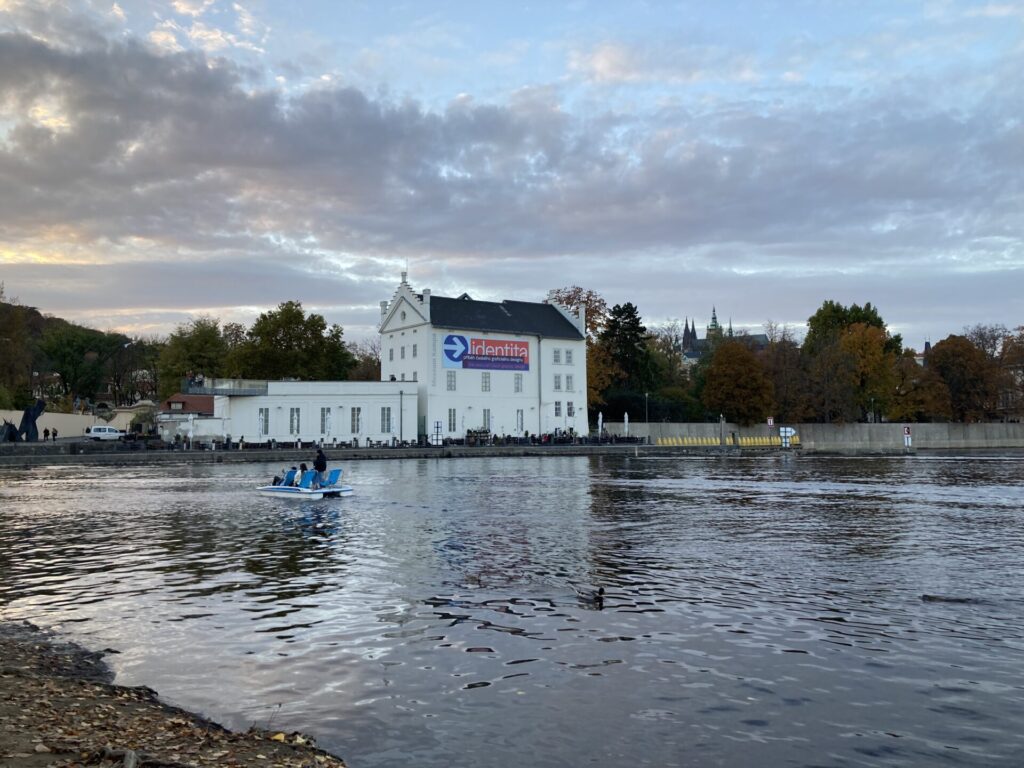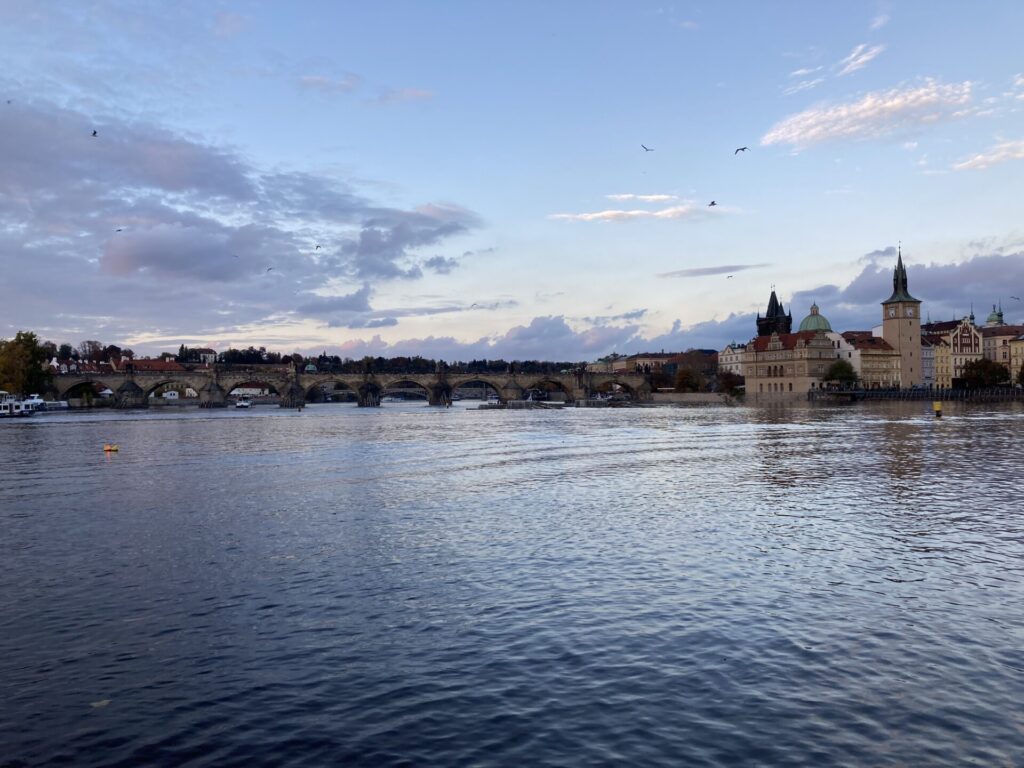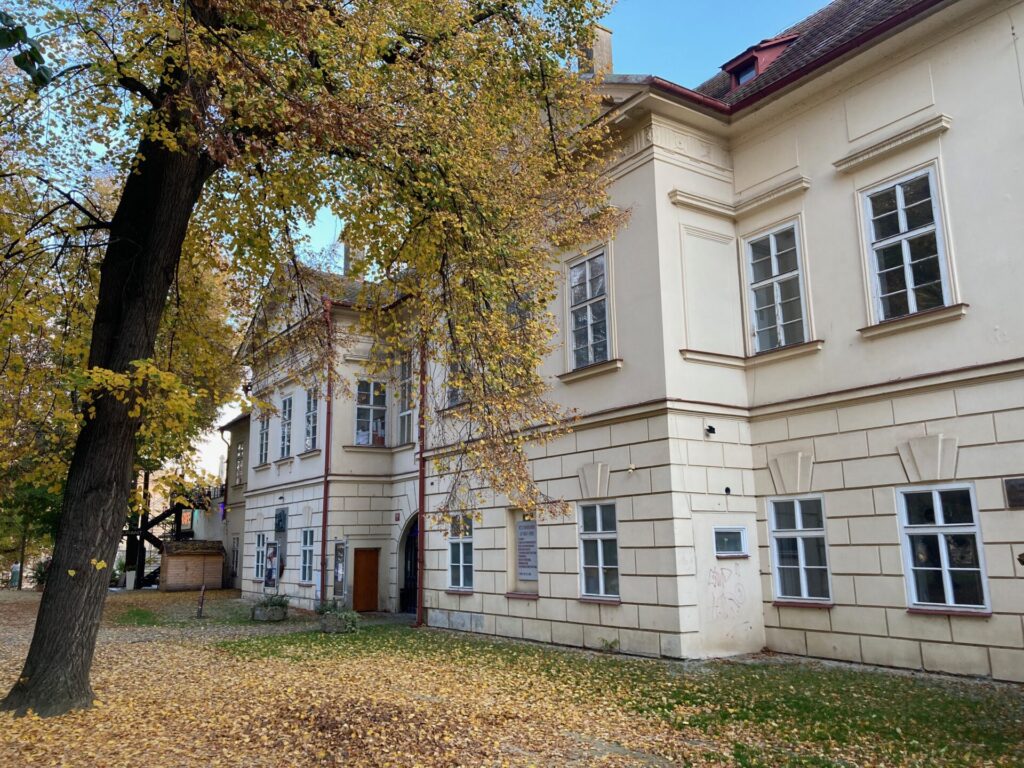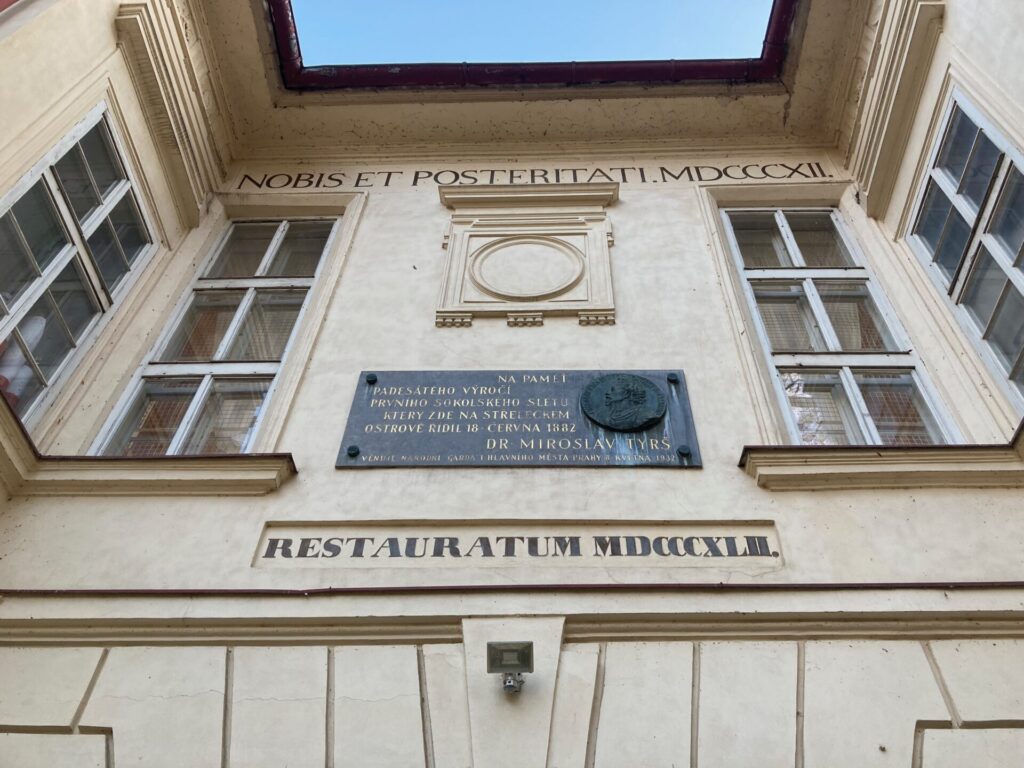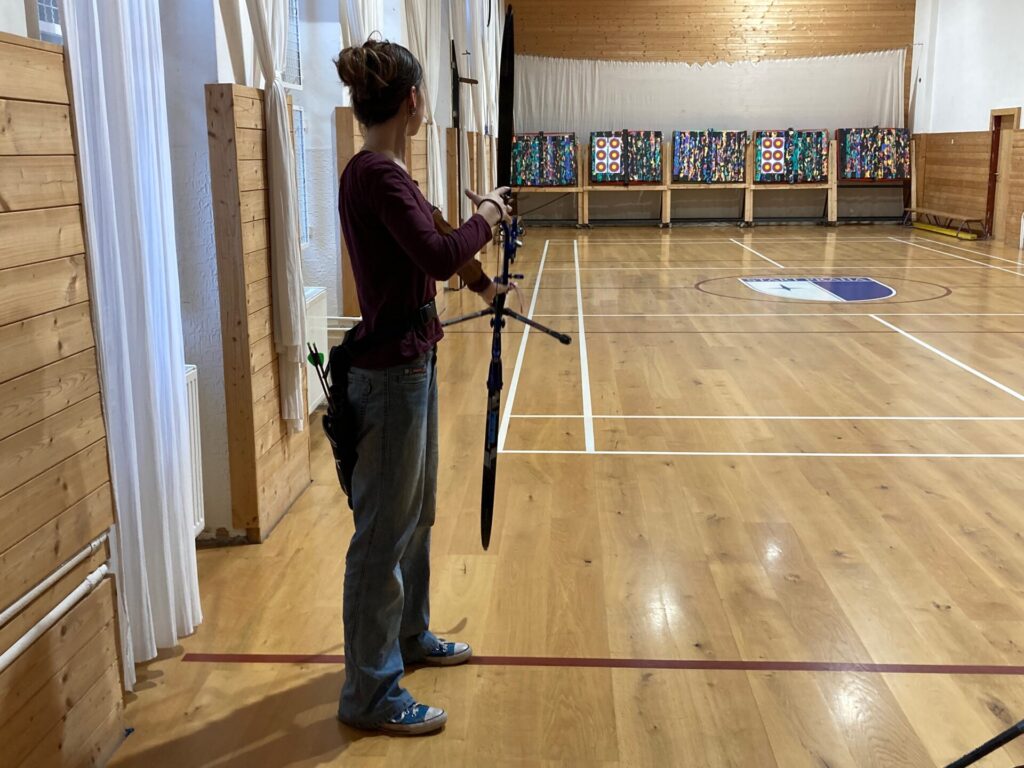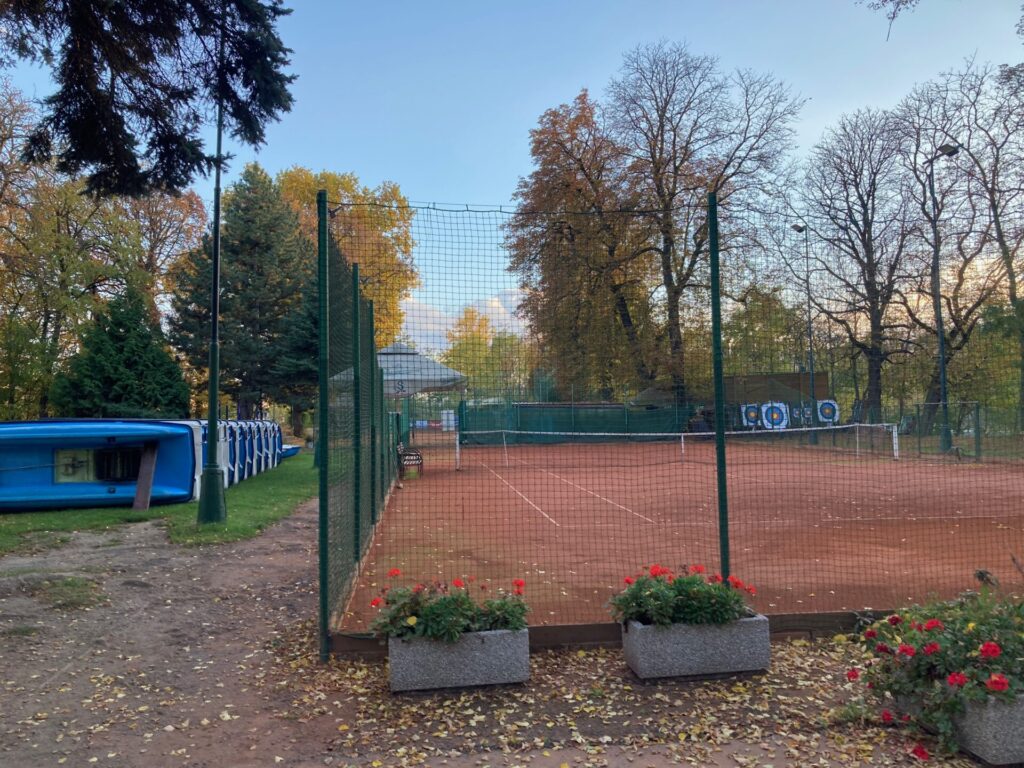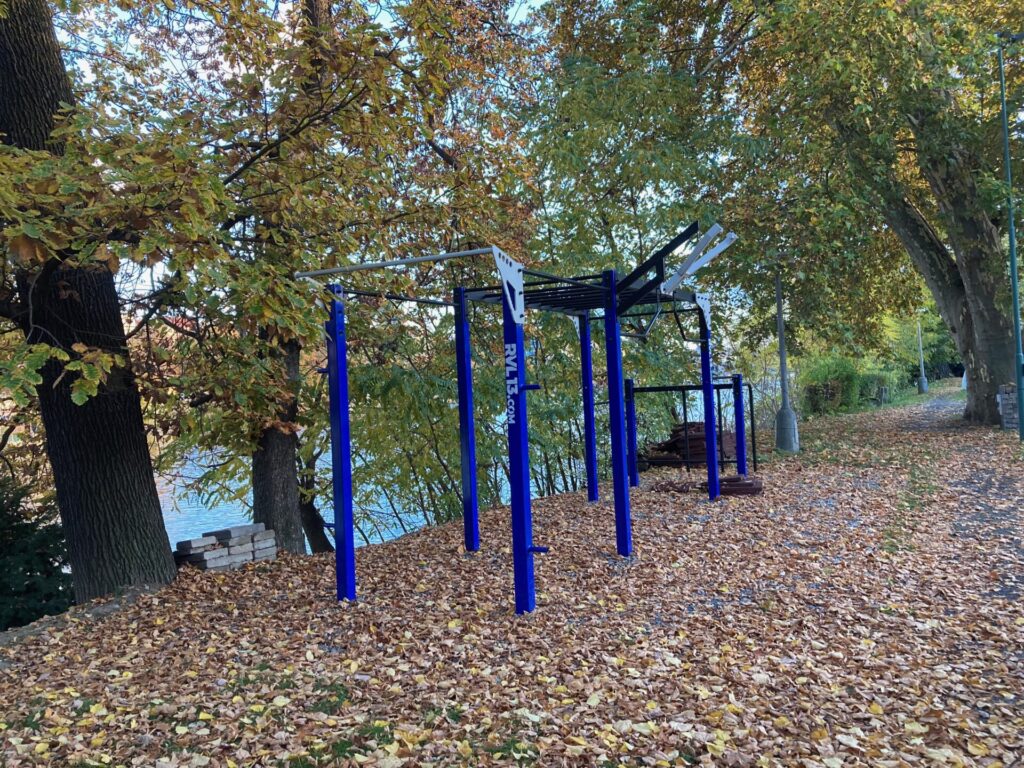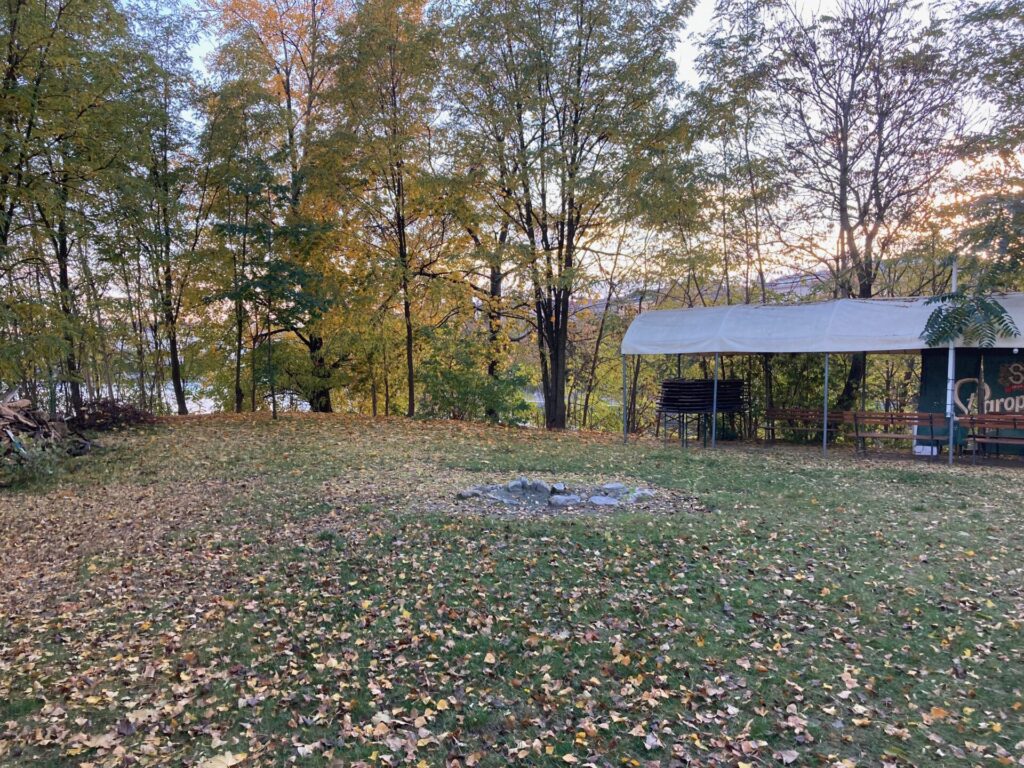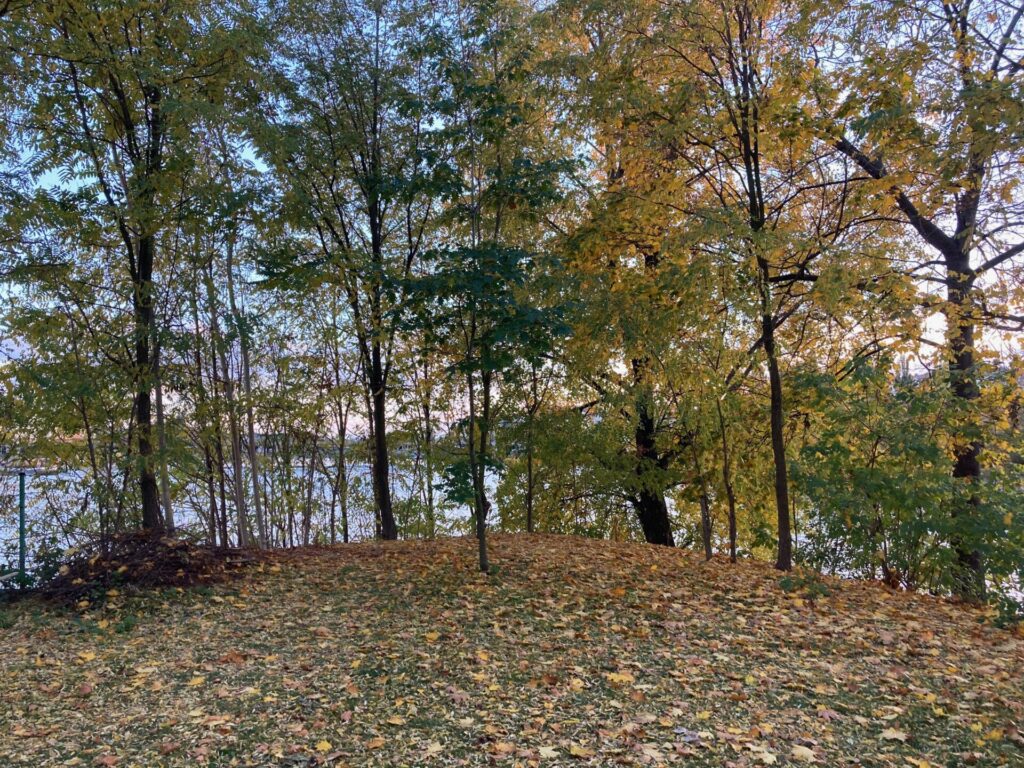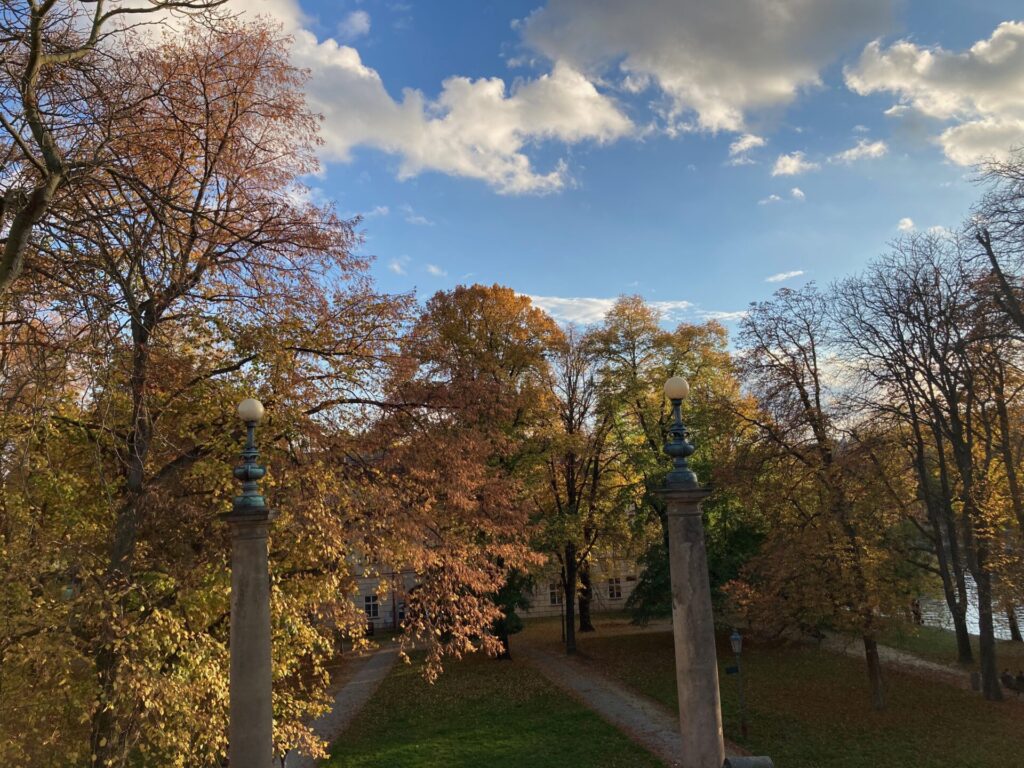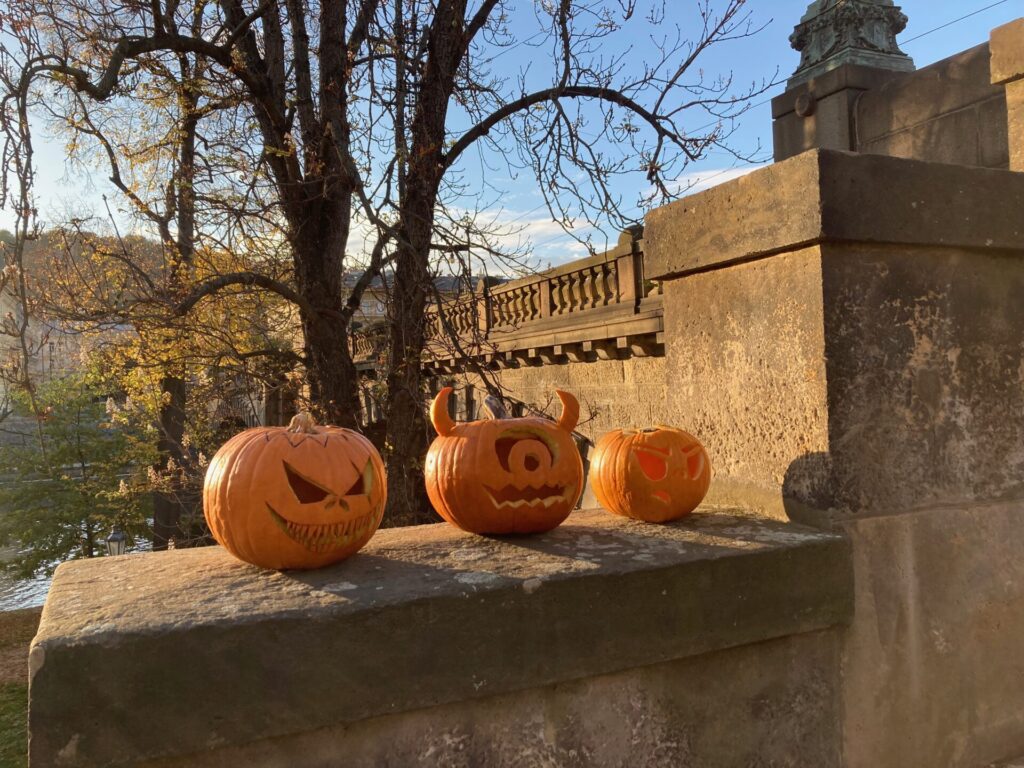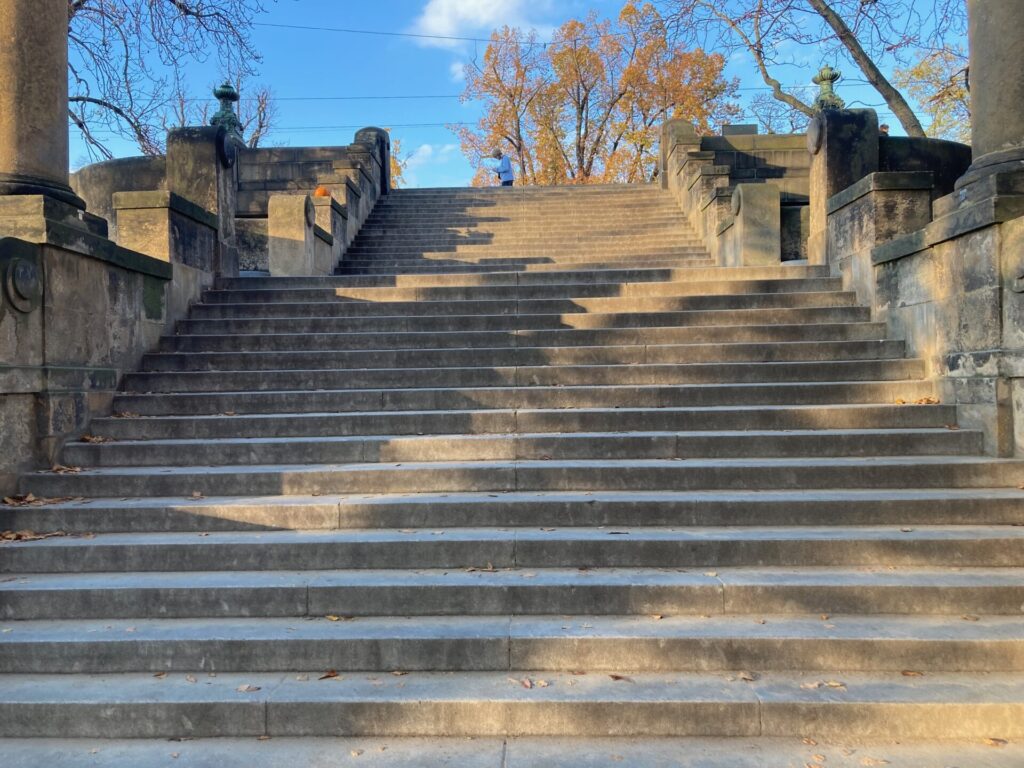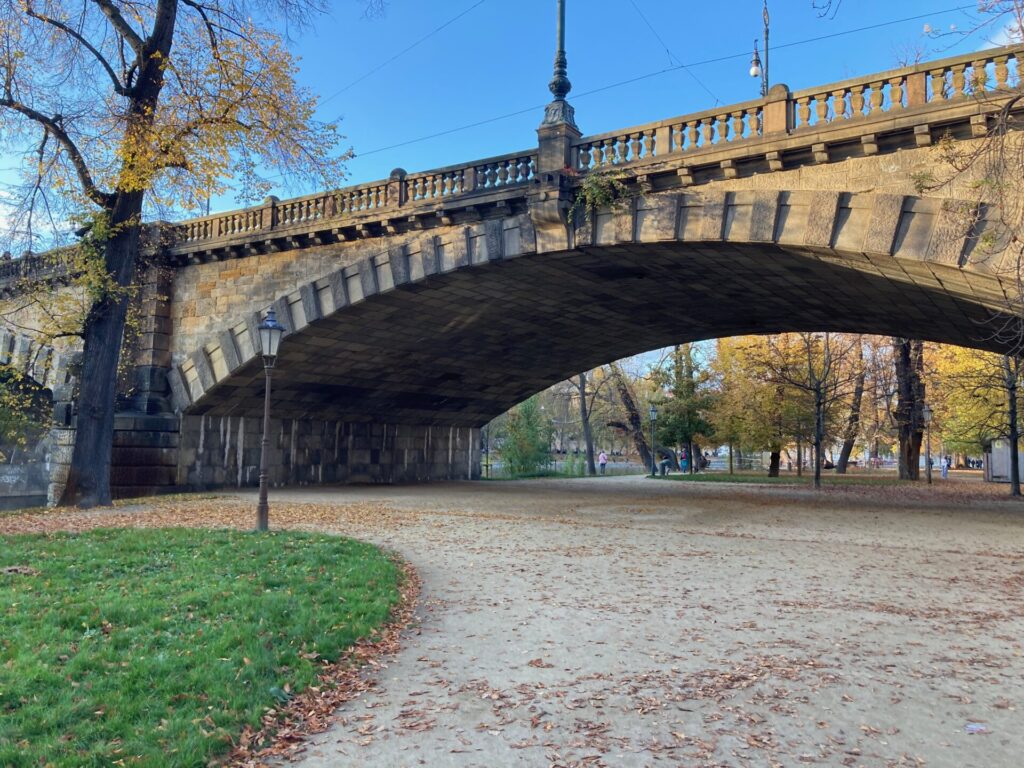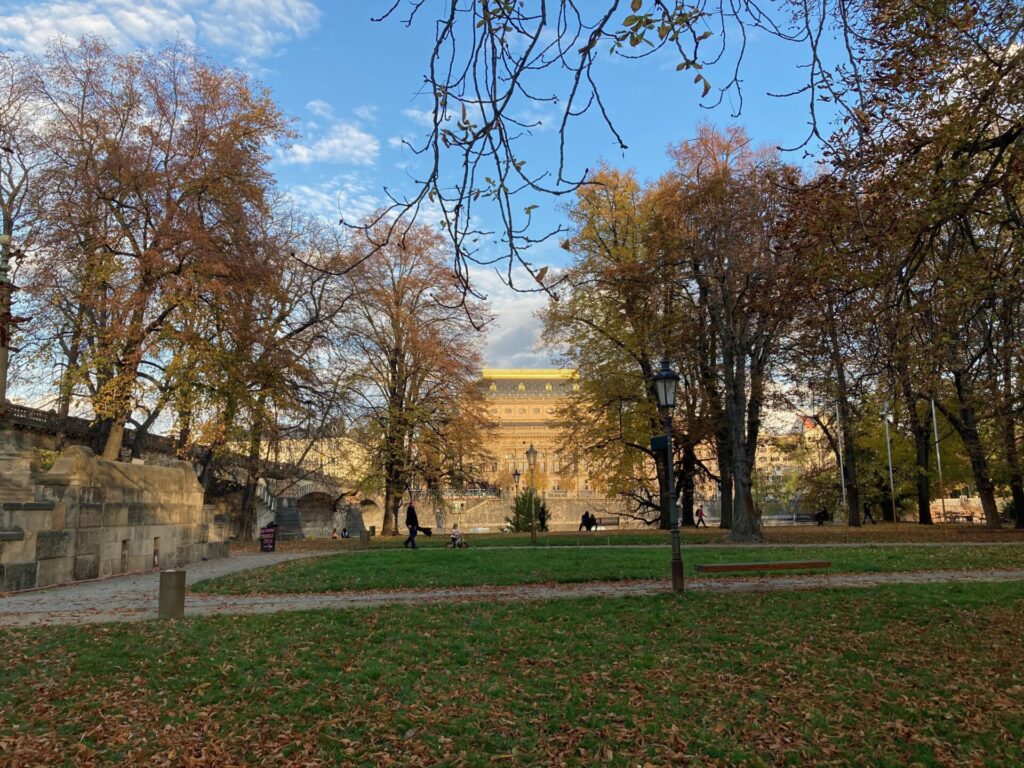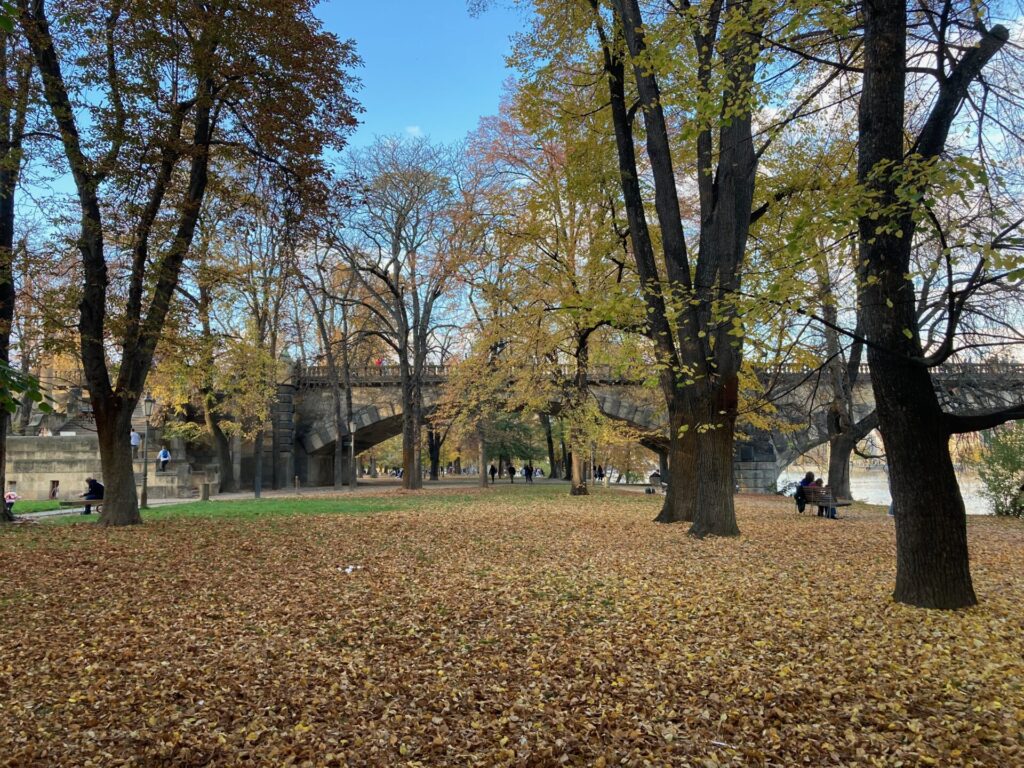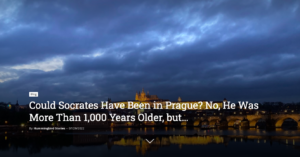First of all, it should be said that the word “procházka” has two meanings in Czech. With a capital letter at the beginning, it is the 12th most common surname. With a lowercase letter at the start of the word, “procházka” means an ordinary walk. Anywhere – along the street, in a meadow, in the forest, or even over a bridge.
And speaking of walking over a bridge, we can talk about walking over the Legion Bridge, near the National Theater. The current bridge was officially opened in June 1901. (At each end of the bridge there are two round towers that were used to collect tolls – in the photo, we can see one of them in the view of the National Theater’s arcade.)
Emperor Franz Joseph I was present at the opening of the bridge. He was the one the bridge was named after until 1919. Its predecessor, a chain bridge, which had been in operation here since 1841, also had the same name. (Fun fact: the bridge’s load test was carried out by walking 150 cattle over the bridge.)
And that’s when the oldest Czech hoax was created. It’s a false report that, surprisingly, is still being spread today. Emperor Franz Joseph is still mockingly called “Old Walk”. This unflattering nickname supposedly came about because a photograph of the emperor was taken at the bridge’s opening, walking in ceremonial uniform at the head of a procession of men with top hats. Several dozen of these figures are in the photograph, following the emperor from the National Theatre towards the Lesser Town. The photograph’s caption read: “A walk on the bridge”. It was supposed to mean that these men were walking on the newly opened bridge. However, it can also be understood mockingly as “some man named Walk” walking on the bridge. And the emperor’s nickname was born.
No one has ever been able to find an article with a photo and the caption “Walk on the Bridge”. The only thing that was found in the contemporary press was a photo with the caption: “Promenade on the Bridge”. Moreover, according to historians, this nickname for the emperor was evidently used by the future president Masaryk and other Czech politicians as early as the 1890s. According to one theory, it originated in a completely different way – in the 1870s, when the arrival of the imperial procession was announced by a rider on horseback. His name was Procházka, and when he arrived to announce the emperor’s arrival, people would shout: “Old Procházka is coming!”.
Emperor Franz Joseph I ruled the monarchy for 68 years, making him the longest-reigning monarch in our history while others were at least 20 years behind him. It is no wonder that he was in the spotlight and that a story about him spread so easily, even though isn’t based on truth and is still being told today. It’s just a shame that what was admirable and true about him is not spread as diligently. For example, the emperor, who lived to the respectable age of 88, was renowned for his hard work. His last words before his death testify to this. In the evening, he told his servants: “Wake me up at three in the morning; I have not finished my work yet.” But no one could wake him up again.
“His” bridge, whether we mean the bridge that connects the National Theatre and Lesser Town to this day or the original chain bridge, was the second bridge over the Vltava River after the Charles Bridge. It was an important transport structure not only for the whole of Prague but also for Archer’s Island (Střelecký Island), which until then was only accessible by ferry, although the first mentions of the island date back to the turn of the 11th and 12th centuries. Over the centuries, the island had many names. It was called Little Venice, Upper and Small Island, Island under the Bridge, Lawn, Water Yard, or also “Šicinzl”, which is a Czechified German expression Schützeninsel – Archer’s Island.
There was a garden here of the Johannite Order, which also owned Kampa Island at that time. During the reign of Charles IV., there was a training ground for archers and crossbowmen. In 1393, the island was bought by the pharmacist Augustin, who had four water mills on the Vltava River. In 1537, thanks to King Ferdinand I, the island once again became a paradise for archers. In the deed of donation, the king stated: “I dedicate the island above the Prague Bridge so that they can practice and have fun on it.”
(“Island above the bridge” here means the island upstream from the Charles Bridge. At that time, the Charles Bridge was called Prague or Stone Bridge.)
At that time, shooters shot at a paper model of a bird of prey on a high pole. To be successful, the shooter had to hit the bird in the head. Only later did shooting at targets begin. During the Thirty Years’ War – and not only then – the island was the target of real battles thanks to its strategic location. In peaceful times, pilgrimages were held here, as well as the 1st All-Sokol Gathering. During the war, the island belonged to the Nazi youth organization, The Hitler Youth.
Although the era of archers – soldiers or hunters – has passed, you can still shoot on Archer’s Island today. The Start Praha sports club is located in the southern part of the island. You can come there to work out and play tennis, but you can also practice archery. The local restaurant hosts corporate and family events, including weddings. Or you can rent the island’s southern tip and sit by the fireplace with friends.
Most of the island is open to the public. Various festivals, concerts, and other cultural events are held here. You can come here for no reason – sit on a bench and look at the National Theater or the Charles Bridge and the Prague Castle. It is a truly romantic place.













